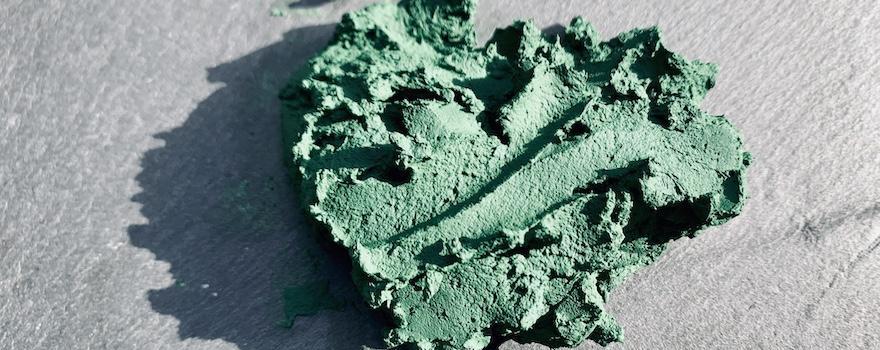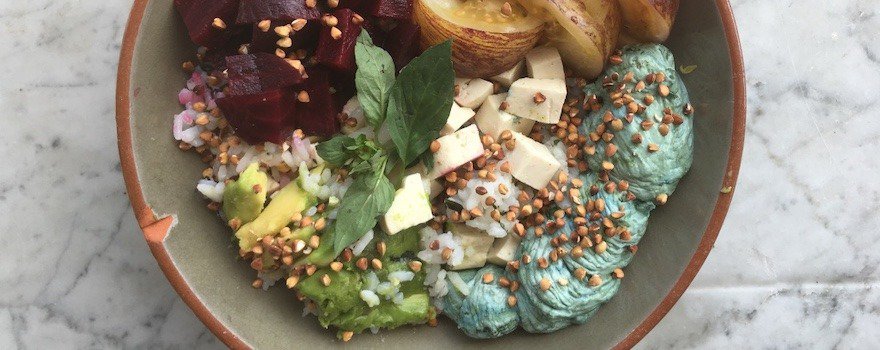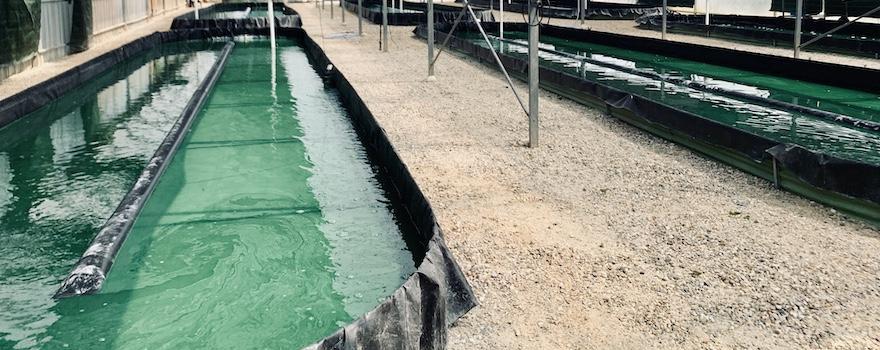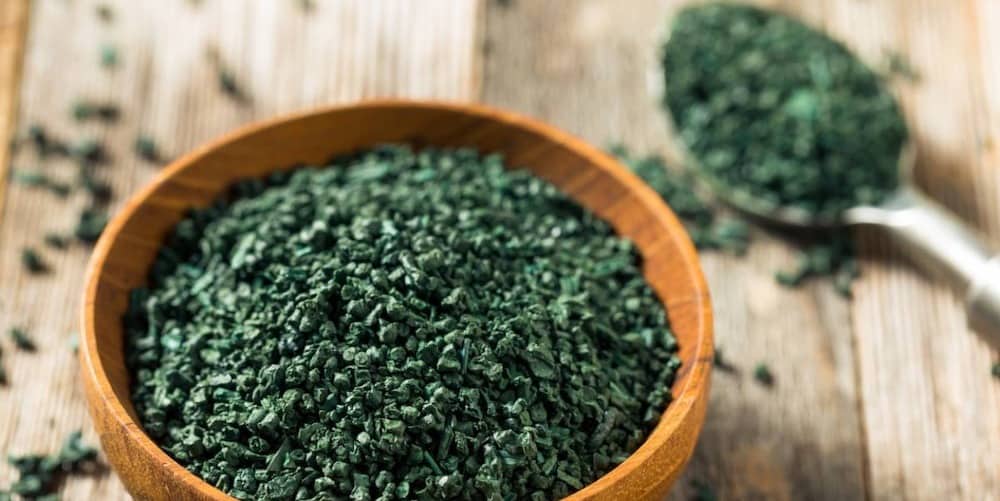Spirulina powder
The spirulina powder is the most commonly found form in stores. It can easily be mixed with a drink, green tea, or apple juice, which soften its taste. It is also added to smoothies and both sweet and savory recipes.
In any case, it will bring a nice green or blue tint to your favorite dishes.
Spirulina flakes
Spirulina in flakes is more “natural” than the powder form because it is less processed: harvesting, pressing, drying, artisanal milling.
It is recommended to consume it preferably in savory recipes, with soup, hummus, or guacamole, for example. Just sprinkle it over salads, eggs, a puree, to enjoy its slight iodized flavor, beautiful color, and crunchiness.
Spirulina tablets
Spirulina in tablets and capsules is recommended for those who do not like the taste of the powder and flakes. Still, be aware that their processing results in a less interesting nutritional value.
Lire aussi l Nos conseils pour acheter de la spiruline en comprimés
Fresh spirulina

This is the best way to benefit from all its nutrients, but unless you source it directly from the producer, fresh spirulina is hard to find.
This one comes in the form of a dark green paste and does not keep for very long. We recommend blending it into a smoothie for breakfast or a coconut milk cocktail for a tasty treat – we promise it’s delicious!
Favor raw spirulina
When dried for preservation and packaging purposes, spirulina loses some of its nutrients. Be sure to check labels carefully. If it is dried cold, at low temperatures, below 42°C, it is considered raw and thus ideal for reaping its benefits.
Taste of spirulina

This is a topic of debate. Some find it has a delicately iodized taste, an umami flavor, or even a chlorophyll-like taste. Others find its marine aroma too strong. Often, the taste varies depending on the production locations, so feel free to compare products.
Spirulina and Vitamin C
It is recommended to pair it with Vitamin C, one of the few vitamins it lacks, which helps to properly absorb the iron. Complement it with vitamin C rich foods, including citrus fruits, acerola, or camu camu fruit.
Spirulina or Chlorella?
Chlorella is a microalga from the Chlorellaceae family, which includes many green algal species rich in chlorophyll. It is often confused with spirulina!
Both are indeed particularly rich in nutrients. Both contain 18 amino acids, including the 8 essential ones for the human body. They are also rich in antioxidant pigments (chlorophyll, carotenoids), vitamins, minerals, and trace elements.
But some nutrients are not present in the same quantities in spirulina as in chlorella. This explains their differences in properties and health benefits. Chlorella is mainly known for its detoxifying action because it contains sporopollenin.
See also our Chlorella or spirulina: what differences and how to choose?
Sustainable consumption: prioritize French and artisanal spirulina

✓ Before buying spirulina, you should first find out its origin. It is now produced all over the world under quite varied conditions. Although its price is more competitive, spirulina grown in China, for example, is often contaminated with lead!
Read also our Artisanally made spirulina with love in the Southwest
✓ Ideally, it’s best to buy French spirulina from small producers near you or at Biocoop. We’ve noticed that large organic store chains often offer foreign spirulina, whereas the French sector is committed to the Fédération des Spiruliniers de France to adhere to a very strict and high-quality set of specifications. The spirulina cultivated in our lands is much more traceable and its consumption is more ecological.
✓ However, there is not (yet) any organic spirulina in France, as spirulina cultivation requires mineral fertilizers that do not meet the production conditions of certified organic agriculture. We were nevertheless informed of a farm in the south of France where the producer makes his own nitrogen fertilizer using plant macerations. He has obtained organic certification.
Also read Organic spirulina doesn’t exist (yet)
✓ It’s somewhat the last stand of small French producers, because the majority of spirulina consumed in France comes from abroad, notably from China, and due to equivalences between the EU and the exporting country, the product can be labeled as organic.



